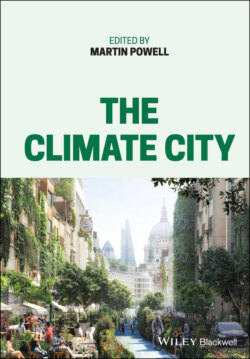Читать книгу The Climate City - Группа авторов - Страница 39
Rome
ОглавлениеThere is a reason why Rome remains so present in our minds when it comes to talking about cities, infrastructure, equality, subjugation and slavery, television dramas, movies, and even Shakespeare. Rome is dramatic, mysterious, and unique, and it is also like any other city today. It expanded, conquered, innovated, succeeded, and failed, and like all civilizations it eventually withered away and died. In many ways, Rome is inspiring, but there are also many lessons to be learnt from it.
Rome is the perfect example of how well positioned cities are to govern on a global level. Unlike the other cities we have looked at that fold back into the region in which they were established, Rome quite literally took over the world. I say “Rome” because it was a dominating identity that remains to be our prevalent descriptor in the course of history – whether you lived in the capital or not you were a Roman; there was no country but an empire – the Roman Empire.
For sustainable development and the economic growth that goes along with it to be truly effective, it must go hand in hand with social inclusion and respect for the environment. The Roman Empire lasted 500 years in part due to its ability to respect these unspoken bonds. It created social equality by giving the plebeians equal rights to the patricians, creating a democracy. It prioritized public service and the common good. It imported grain, servicing and feeding its population. It outsourced its material needs to foreign slaves (not necessarily something to be admired but in line with the times). This is governance we still see today with modern companies outsourcing the vast majority of things they buy abroad. China now produces 50% of the world’s clothes and 70% of its mobile phones.12
Inevitably, the fault lines erupted, and it all went downhill with territorial expansion, corruption with the new wealth market not shared, wars and uprisings within conquered lands, national debt, and inflation.
Another, less well-known factor was climate change. As documented by Kyle Harper in The Fate of Rome: Climate, Disease, and the End of an Empire, the period between roughly 200 BCE and 150 CE is now known as the Rome Climate Optimum.13 This was a period of a warm, wet, and predicable climate that helped harness the empire’s agricultural crops. The climate became cooler and dryer in the third century, resulting in droughts and crop failures, and by the fifth century the Late Antique Little Ice Age arrived. The changing climate reduced the empire’s resilience to a variety of shocks, such as a smallpox pandemic and the outbreak of the Plague of Justinian. The decade before the outbreak of the plague in the sixth century saw some of the coldest temperatures in millennia brought about by a series of massive volcanic eruptions in central Asia, which likely forced gerbils and marmots out of their natural habitats, causing the bacteria-bearing fleas they carried to infect the black rats whose population had exploded along Rome’s network of trade routes.
A weakened population, mass deaths, a dying democracy, war, inflation, national debt, and corrupt governance, helped along by a climate crisis, saw the fall of Rome. But this does not take away from the lesson that Rome is perhaps the greatest example we have in recorded history of a city with effective, far-reaching leadership. They recognized that sustainable development and economic growth must go hand in hand with social inclusion and respect for the environment.
